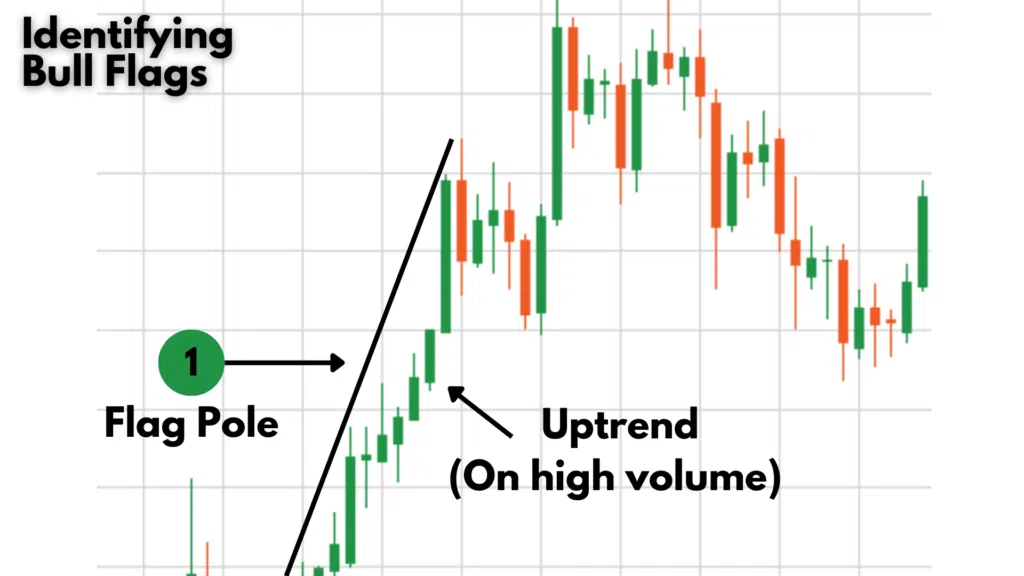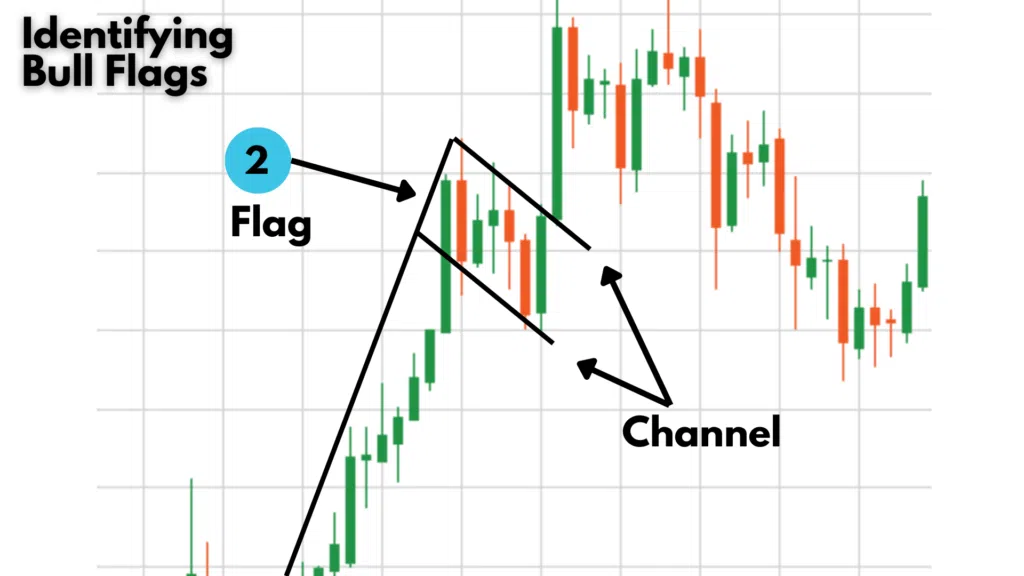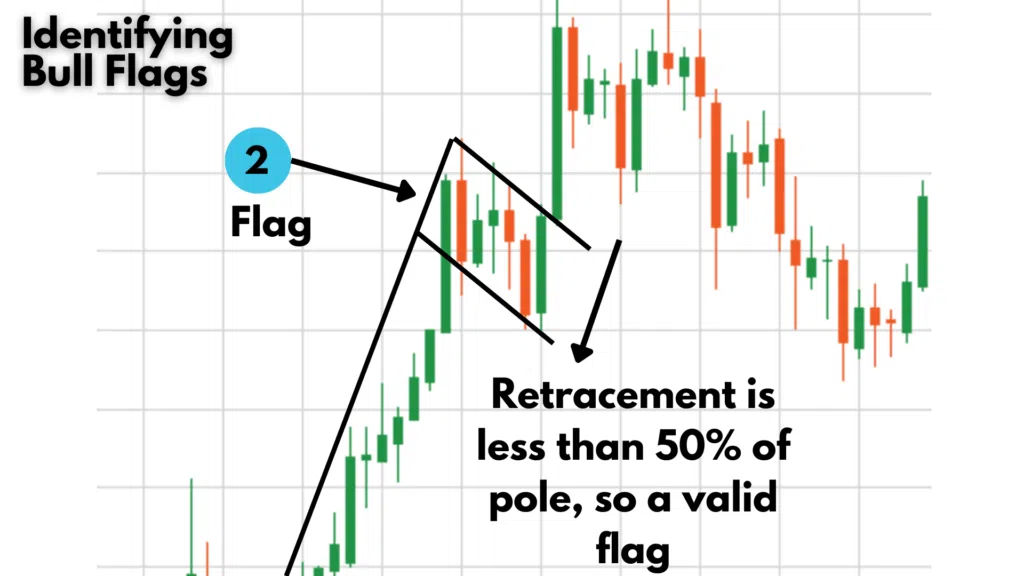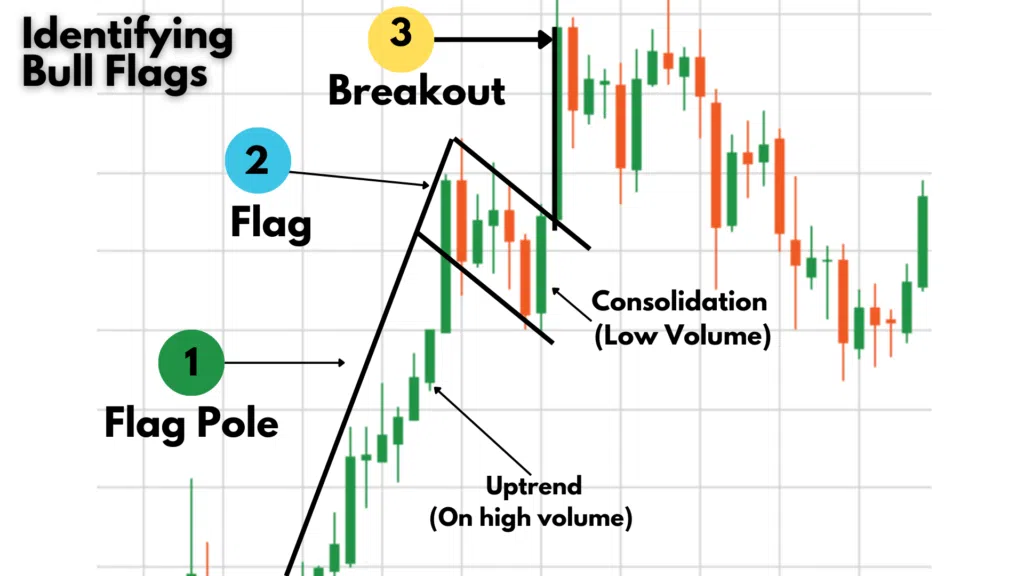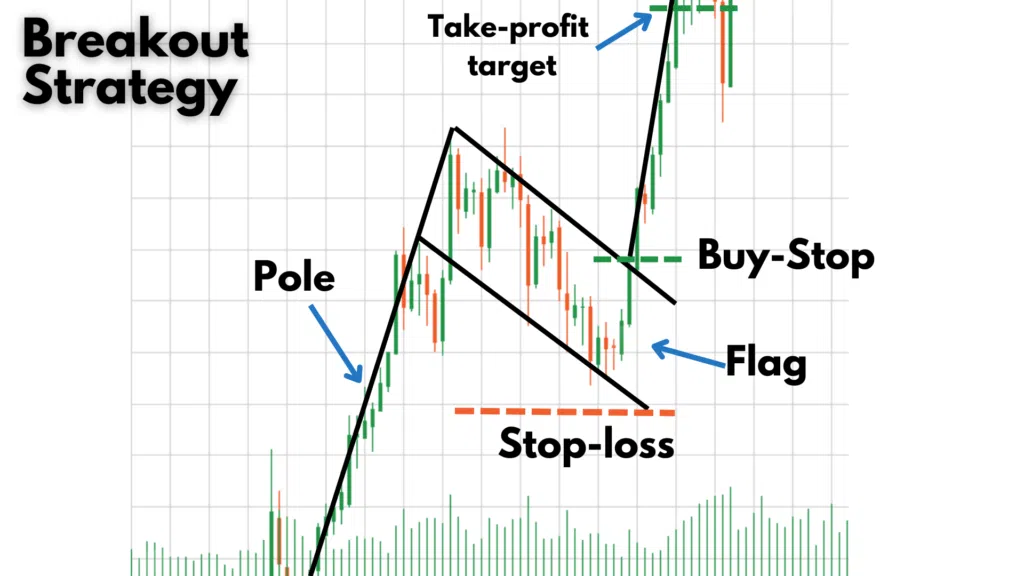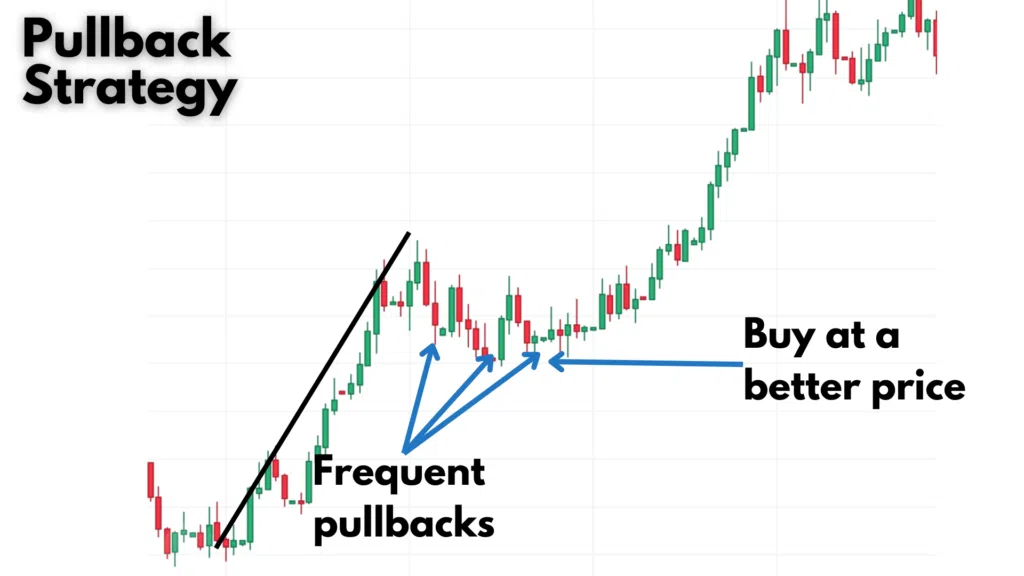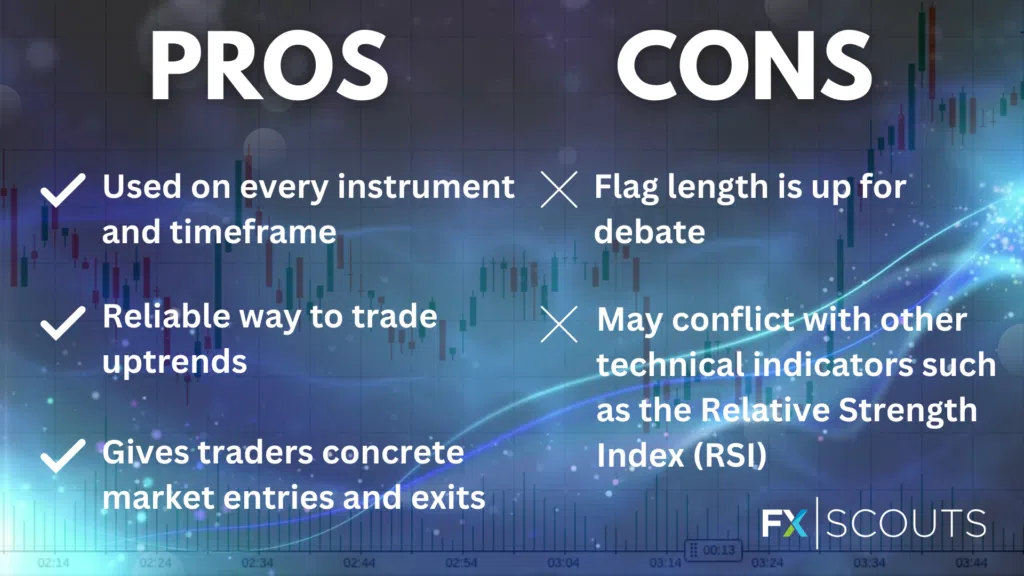Bull flags are multi-candlestick patterns that occur frequently on the charts and have a high probability of success. In this video, Alison shows you how to identify bull flag patterns and provides two bull flag trading strategies.
Understanding the Bull Flag Pattern
- Overview: In this video, I will discuss the bull flag pattern, a highly effective trading pattern that can significantly enhance your trading arsenal.
Characteristics of a Bull Flag Pattern
- Definition: A bull flag is a continuation pattern that typically appears after a pause in an uptrend, signaling a potential movement higher.
- Application: This pattern is versatile, and applicable across all instrument classes and timeframes.
Trading Strategies Involving Bull Flags
- Long Positions: The bull flag can indicate holding your long positions open.
- Short Positions: It may also suggest closing short positions.
Identifying a Bull Flag
- Complexity: Identifying a bull flag can be complex due to its multiple components.
- The Pole: First, there’s the pole, representing the uptrend, usually occurring on high volume.
- The Flag: Then, the flag shows consolidation or a slight downward slope, fitting between two channel lines or trend lines on low volume.
- Retracement Criteria: The flag is considered valid if the retracement does not exceed 50% of the pole, ideally being less than 38% of the original trend.
- Breakout: The breakout above the flag, signalling the continuation, is measured by the length of the pole and occurs at high volume.
Techniques to Identify Bull Flags
- Trend Line Use: Connect the bottom of the pole to the top using a trend line.
- Channel Tool: Employ the channel tool to define the flag, which can have a slight lean or be horizontal.
- Practice: Practice identifying bull flags on a demo account and conduct backtesting.
Break Out Strategy: Trade based on the breakout strategy.
- Entry Point: Enter at the closure of the first candle that breaks above the trend lines.
- Order Placement: Create a buy-stop order above the top trend line of the flag and place a stop loss below the bottom channel line.
- Target Setting: The target could be roughly the length of the flagpole or use a 1 to 2 risk-reward ratio.
Important: Always manage your risk correctly, employing stop losses and taking profits.
Pullback Strategy
- Complexity: This strategy is more challenging due to the timing.
- Market Dynamics: Use pullbacks in the market to buy at better prices and improve your risk-reward ratio.
- Technical Tools: Utilise tools like the Fibonacci retracement tool for better entry points.
- Entry and Exit: Buy on the retest of the support line and set stop losses below the bottom trend line or support level.
- Complementary Techniques: Use other technical indicators and fundamentals to support your analysis.
Pros and Cons of Trading the Bull Flag
- Pros: Predicts continuation across all instruments and timeframes and provides concrete market entry and exit points.
- Cons: Interpretation of flag length can vary among traders, potential conflict with reversal indicators, and pattern may appear overbought yet continue higher.
Conclusion
- Please ask questions regarding bull flags or other trading patterns below or on Instagram or Facebook.
Disclaimer: This transcript was created with AI assistance



























